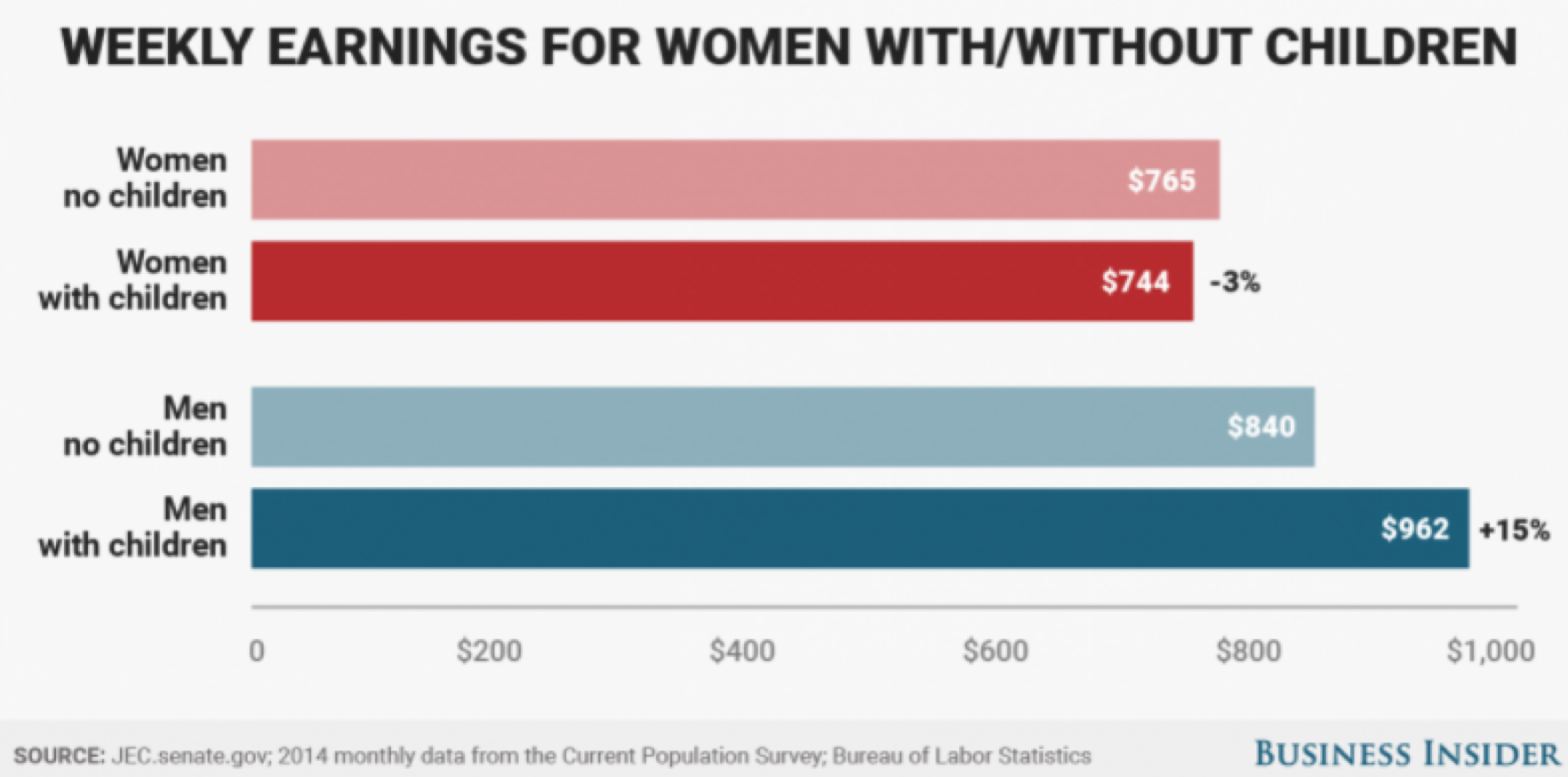While the U.S. has made tremendous progress in gender equality, a gender gap persists. Whether it is a result of institutional discrimination towards women, their roles as caregivers affecting their salaries, or a combination of both, a gender wage gap is prevalent among many occupations.
According to a report released by the Senate Joint Economic Committee Democratic Staff in 2016, a woman earns on average 79 cents for every dollar a man earns. This gap is even wider when race is accounted for Black and Hispanic women who earn 65% and 55%, respectively, of what white men earn.
Furthermore, women with children often earn less after returning to the workforce, while the opposite is true for working fathers – a phenomenon known as the “mommy penalty” (see chart below). This disparity can be explained by the logic that working mothers tend to work fewer hours than working men (fortunately, this is slowly changing thanks to increasing demands for paternity leave). Less apparent and more controversial explanations include the differences in how mothers and fathers are perceived at work – some employers may view motherhood as a “signal of lower levels of commitment and professional competence.” Working fathers, on the other hand, may be viewed as having “increased work commitment and stability.”
On an executive level, as of January 2017, only 5.8% of CEOs at S&P 500 companies were women. According to PWC, women comprise nearly 60% of employees in the financial services industry, but only 19% progress into senior level roles.
Aside from the obvious issue of inequality when discussing the gender gap, low levels of women leadership may also be negatively affecting the performance of companies. The “Women on Boards” study conducted by MSCI revealed that “companies in the MSCI World Index with strong female leadership generated a Return on Equity of 10.1% per year versus 7.4% for those without.” McKinsey analysis has shown that companies in the top quartile for gender diversity are 15% more likely to outperform those in the bottom quartile. The findings suggest that when companies prioritize supporting women through work/life balance and leadership roles, the benefits to female employees trickle down to the company.
At Community Capital Management, gender diversity has always been a top priority for us—not just as an impact theme, but for our business. Of our 23 employees, 13 are male, 10 are female, and we have strong female leadership among executive positions that includes our President/COO, Chief Compliance Officer, Chief Marketing Officer, and one of our Portfolio Managers.
{{cta(‘ca90d1b8-e5fb-4c39-a1ae-c55e9ea55ff0′,’justifycenter’)}}

